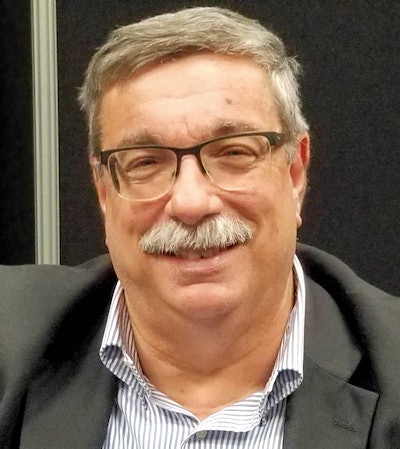
As the world struggles to manage the novel coronavirus outbreak, a common theme is emerging of healthcare systems in hard-hit cities overwhelmed by an influx of COVID-19 patients. Could digital technologies like PACS and enterprise imaging help balance the load?
 PACS consultant Michael J. Cannavo.
PACS consultant Michael J. Cannavo.The COVID-19 pandemic has exposed critical flaws and bottlenecks in healthcare. Test results are taking too long to deliver to doctors and patients, in-person encounters expose both patients and healthcare providers to infection, and healthcare personnel in outbreak hotspots are overwhelmed while those in less impacted locations await the call to action.
So how do we address the COVID-19 outbreak while planning for future pandemics? Technology exists to allow us to use people and procedures remotely, thanks to digital imaging advances that have been largely pioneered in radiology. But we must make additional progress in order to be fully prepared.
Putting interoperability to the test
For years we have talked a good game about healthcare interoperability and developed standards that allow clinical systems to work together, like DICOM, HL-7, and Integrating the Healthcare Enterprise (IHE). But we have never put our aspirations about healthcare interoperability to the test. It's time we do it.
We could take a first step by creating a national clearinghouse for COVID-19 patient data that all healthcare facilities in the U.S. would have access to. This would be accessible by every primary care physician who needs to order a COVID-19 diagnostic test or imaging exam and who has appropriate credentials.
Healthcare providers would dial into the clearinghouse and have access to the scheduling system of all facilities within a defined radius of the patient's location where diagnostic testing or imaging would be available. If the patient indicated they could drive "X" miles to a facility, the system would pull up the site that can do the procedure first using that criteria.
Two or three other labs that may be closer would also be provided. The patient would then select the site that best fits their requirements. Once the patient selects the testing location of their choice, the clearinghouse would then send a confirmation to the patient's cell phone along with a map directing them to the facility.
The patient would need to confirm their appointment and would be scheduled for whatever test their provider ordered. Reminders would also be sent through the system.
Once the patient shows up and has the study performed, data would then be sent to a central server that is enabled with artificial intelligence (AI) software capable of analyzing data from both imaging and lab tests. The system would automatically "review" studies and render an unofficial finding, either positive, negative, or needing further review.
Studies would then be archived in a vendor-neutral archive (VNA), with a copy sent to providers via image sharing if/as desired. Results can also be made available to the patient on a portal for the patient to access if/as desired. This would utilize many of the features and functionality of a PACS or enterprise imaging system.
The final diagnostic interpretation would still need to be conducted by a radiologist or lab specialist, but AI could provide an immediate test result and allow the patient the ability to either feel comfortable that what they have isn't contagious or, if it is, to start treatment immediately.
The interesting thing about this model is that remote interpretation using AI could be used not only in the U.S. but worldwide as well, providing an alternative to the traditional method of waiting for test results.
If patients test positive, they can be given a "telehealth kit" that allows them to monitor their temperature on a daily basis; it would also serve as a platform for any other tests that can be performed remotely via telemedicine. Patient data could be charted, allowing clinicians to know when the patient is through the critical period and can leave quarantine.
A centralized database would also allow epidemiologists to chart areas where outbreaks have occurred. Even if numerous negatives are incurred (keeping in mind nearly 90% of all COVID-19 tests are negative) they might be able to see what else may be going on in a contained geographic area.
Including pathology, too
For patients who need pathology studies interpreted quickly, the growing use of digital pathology systems feeds well into the clearinghouse concept. While pathology is still decades behind radiology in adopting digital image management, the current pandemic should accelerate the specialty's move to digital imaging.
Implementing such a national virus database would not be easy -- it would require the cooperation of all parties, not the easiest thing to do in a healthcare setting. Many facilities don't want to provide access to their scheduling systems for a host of reasons (none technologically related). But in a pandemic situation like we are in now, the option not to participate shouldn't even be a consideration. You do what has to be done for the betterment of the populations.
We have the tools in our arsenal to make a difference in how we treat this pandemic -- and God forbid, any others as well. If we can overcome some of the nontechnical barriers and work together for the betterment of all, then the full value of the technology we have been developing for the past 30 years will finally be realized.
Michael J. Cannavo is known throughout the radiology industry as the PACSman. After several decades as an independent PACS consultant, he worked as both a strategic accounts manager and solutions architect with two major PACS vendors. He has returned to consulting to help facilities integrate various clinical systems, in addition to performing PACS optimization services, system upgrade and proposal reviews, contract reviews, and other items.
The comments and observations expressed are those of the author and do not necessarily reflect the opinions of AuntMinnie.com.



















